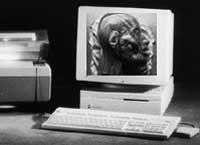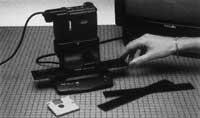The Virtual Man on Radio
1995/01/01 Elhuyar Zientzia Iturria: Elhuyar aldizkaria
Researchers at the University of Colorado have cut in the United States the corpse of a frozen man preserved in a rigid synthetic foam at 1,735 x. Then a HD camera has received point by point each of the fillets. Then all the images thus obtained have been collected to the memory of a programmed computer, being able to provide data on any part of the body when desired, such as bones, arteries, nerves, organs, etc.

The “virtual man” occupies 42 gigabit in the computer’s memory, i.e. 72 CD-ROM discs or enough to store a billion words. This data on the virtual human being can be obtained through the Internet worldwide. This network is working for about fifteen years in the exchange of information between different universities of the world.
The computer expert at the Washington National Library of Medicine, Michael Ackerman, says that this data will be used for the teaching of medicine, explaining the organs of the body in three dimensions, creating virtual environments for surgery and offering images for the preparation of prostheses.
It took more than five years to carry out this project. Called The Visible Human Project, it encourages experts at the California University of San Francisco to conduct new research. These aim to digitize data on the human embryo, but the information received will take into account space and time. In other words, it will collect not only the shape of the different parts of the embryo, but also the evolution over time. Micrographs, ultrasounds, x-rays, anatomical collections, etc. to collect data.
Michael D., project manager. According to researcher Doyle, new visualization techniques will help understand how living organisms are created and developed.

Gai honi buruzko eduki gehiago
Elhuyarrek garatutako teknologia




